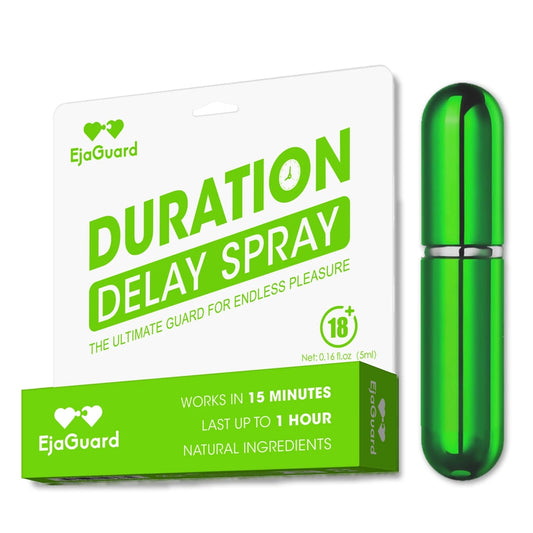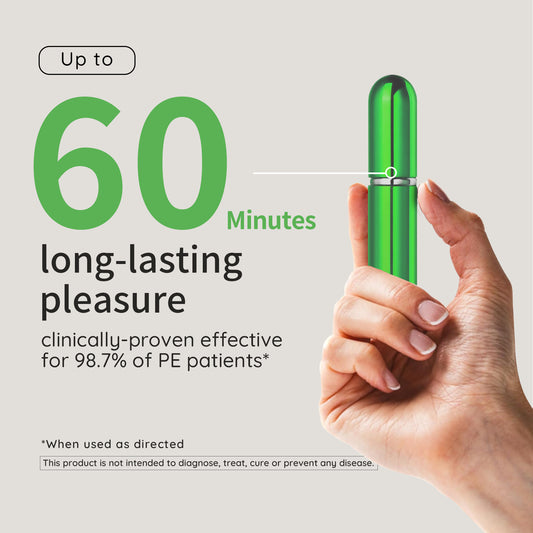Überbrückung der Orgasmuslücke: Beseitigung von Unterschieden in der sexuellen Befriedigung während der Intimität mit Partnern
Die Orgasmuslücke ist nach wie vor ein relativ unbekanntes Thema und trägt bei Frauen, die keine maximale sexuelle Befriedigung erfahren, zu Gefühlen der Ausgrenzung bei.

Der erhabene Orgasmus kann für Personen jeden Geschlechts eine elektrisierende, kraftvolle und befriedigende Erfahrung sein!
Auch wenn die Wege zum Höhepunkt unterschiedlich sein können, kann man davon ausgehen, dass wir alle die Ekstase eines Orgasmus gleichermaßen genießen.
Dennoch gibt es ein erhebliches Problem, die sogenannte Orgasmuslücke, die dazu führt, dass Frauen das Gefühl haben, beim Erreichen des Höhepunktes sexueller Befriedigung übersehen zu werden.
In diesem Artikel werden die Sexualverhaltensweisen von Männern und Frauen untersucht, die zur Orgasmuslücke beitragen, sowie die Faktoren, die bei Frauen während der Intimität mit einem Partner zu weniger Orgasmen führen und Strategien, die Paare anwenden können, um diese Lücke zu schließen und die sexuelle Lust der Frau im Schlafzimmer zu steigern.
Die Orgasmus-Differenz verstehen
Die Orgasmuslücke bezeichnet die Ungleichheit der Orgasmushäufigkeit zwischen Paaren unterschiedlichen Geschlechts oder unterschiedlicher sexueller Orientierung.
Eine aktuelle Studie, die die Orgasmushäufigkeit bei schwulen, lesbischen, bisexuellen und heterosexuellen Personen untersuchte, ergab, dass heterosexuelle Männer bei sexuellen Begegnungen die höchste Orgasmusrate (95 %) erlebten. Umgekehrt verzeichneten heterosexuelle Frauen die niedrigste Orgasmushäufigkeit (65 %).
Was ist der Grund für die geringere Orgasmushäufigkeit bei heterosexuellen Frauen?
Die als „Lustlücke“ bezeichnete Orgasmusdisparität ist auf verschiedene Faktoren zurückzuführen.
Vor allem gibt eine beträchtliche Zahl von Erwachsenen zu, nur begrenzte Kenntnisse der weiblichen Anatomie zu haben. Die Ergebnisse einer Studie über gynäkologisches Wissen unter College-Männern und -Frauen zeigen, dass weniger als die Hälfte der Männer die Klitoris genau identifizieren kann.
Wenn dieser Mangel an Wissen mit einer unzureichenden Kommunikation hinsichtlich der sexuellen Vorlieben von Frauen einhergeht (wie etwa dem Bedürfnis nach ausgedehntem Vorspiel, oraler Stimulation oder längerem Geschlechtsverkehr), entsteht ein Umfeld, das die ausgeprägte Orgasmuslücke zwischen heterosexuellen Männern und Frauen begünstigt.
Warum sollten Männer sich mehr Gedanken über die Orgasmusungleichheit machen?
Ob bei lockeren Treffen mit neuen Partnern oder bei der Pflege langfristiger Beziehungen: Wenn Sie dem sexuellen Erlebnis Ihres Partners Priorität einräumen, kann dies das allgemeine Vergnügen aller Beteiligten erheblich steigern. Darüber hinaus kann die Konzentration auf das Vergnügen einer Frau zu einem langsameren Tempo der sexuellen Aktivität und einem längeren Geschlechtsverkehr führen, was für beide Partner ein für beide Seiten befriedigendes Erlebnis schafft.
Eine Studie, die den Zusammenhang zwischen weiblichen Orgasmen und der Wahrnehmung von Männlichkeit untersuchte, ergab, dass Männer, die ihrer Partnerin erfolgreich Orgasmen bescherten, ein höheres Maß an sexuellem Selbstbewusstsein zeigten als Männer, denen dies nicht gelang. Während weibliche Orgasmen als Bestätigung der Männlichkeit eines Mannes angesehen werden, kann das Ausbleiben von Orgasmen leider als eine Form von „Versagen“ oder Unzulänglichkeit im Bett wahrgenommen werden.
Diese Betonung der weiblichen Lust ist nicht nur heterosexuellen Männern vorbehalten; auch bisexuelle und lesbische Frauen können davon profitieren, wenn sie die Bedeutung der Erforschung unterschiedlicher Methoden der weiblichen Lust anerkennen, um den Orgasmus ihres Partners zu erleichtern und langfristige sexuelle Befriedigung und Freude zu fördern.
Möglichkeiten zur Überbrückung der Orgasmus-Differenz
Basierend auf der oben genannten Studie neigte die Gruppe heterosexueller Frauen, die häufiger Orgasmen erlebten, dazu:
- Oralsex von ihrem Partner erhalten
- Haben Sie länger anhaltenden Geschlechtsverkehr
- Fragen Sie nach dem, was sie im Schlafzimmer wollen
- Mehr Zufriedenheit in der Beziehung haben
- Loben Sie Ihren Partner im Bett
- Probieren Sie neue Positionen aus
- Fantasien ausleben
Wenn Sie eine heterosexuelle Frau sind, die beim Geschlechtsverkehr Schwierigkeiten hat, einen Orgasmus zu erreichen, finden Sie hier einige praktische Vorschläge, die Ihnen dabei helfen können, ein angenehmeres und erfüllenderes sexuelles Erlebnis zu erreichen.
Sexuelle Wünsche verstehen: Ein Leitfaden zur effektiven Kommunikation
Eine offene und ehrliche Kommunikation über Ihre sexuellen Wünsche kann nicht nur zu mehr Freude am Sex führen, sondern gibt Ihnen und Ihrem Partner auch die Gewissheit, dass Sie im Schlafzimmer auf einer Linie sind.
Denken Sie daran, dass unsere Partner keine Gedanken lesen können. Wenn es etwas gibt, das Ihnen beim Sex gefällt – eine bestimmte Stellung, ein bestimmter Druck oder ein bestimmter Penetrationswinkel –, sprechen Sie offen darüber. Ermutigen Sie Ihren Partner, weiterzumachen oder sein Verhalten anzupassen, indem Sie Signale wie „weitermachen“ oder „langsamer“ geben, wenn Sie spüren, dass ein Orgasmus bevorsteht.
Integrieren Sie eine erhöhte orale und manuelle Stimulation
Wussten Sie, dass nur 18 % aller Frauen allein durch vaginale Penetration einen Orgasmus erreichen können?
Die Stimulation der Klitoris steigert nicht nur die Erregung und das sexuelle Vergnügen, sondern intensiviert auch den Orgasmus der Frau über das hinaus, was durch Geschlechtsverkehr allein erreicht wird.
Bei ihrer beeindruckenden Anzahl von 8.000 Nervenenden ist es kein Wunder, dass die Klitoris über eine solch enorme Macht verfügt!
Während Oralsex eine entscheidende Rolle bei der Herbeiführung eines weiblichen Orgasmus spielt, gibt es auch alternative Methoden zur Maximierung der klitoralen Stimulation, angefangen mit ein wenig Sexualerziehung.
Eine weniger bekannte Tatsache über die Klitoris ist, dass sie über ihre ausgedehnte innere Struktur hinausgeht, die über den sichtbaren äußeren Teil hinausgeht.
Um das Vergnügen und den Orgasmus für die Frau zu optimieren, kann durch das Eindringen in die Vaginalöffnung eine vorwiegend interne Stimulation der Klitorisschenkel erreicht werden.
Die Sexualtherapeutin Vanessa Marin empfiehlt diesen internen Ansatz, wenn die Klitoris zu empfindlich für orale Stimulation ist. Indem Sie einen oder zwei Finger in die Vagina einführen, erreichen Sie eher den G-Punkt (wo die Crura auf die Klitoriszwiebel treffen), was zu einem explosiven Höhepunkt führt.
Verlängern Sie das Vorspiel für gesteigertes sexuelles Vergnügen
Bevor es zum penetrativen Geschlechtsverkehr kommt, ist es wichtig, die Erregung und sexuelle Erregung langsam zu steigern. Das Vorspiel ist hierfür eine hervorragende Methode und bietet beiden Partnern ein anregendes und lustvolles Erlebnis.
Die Sexualtherapeutin und Professorin Dr. Ruth Westheimer betont die Bedeutung des Vorspiels und hebt dessen doppelte körperliche und emotionale Funktion bei der Erregung von Frauen hervor. Während viele Männer schon beim bloßen Gedanken an Sex erregt werden, benötigen Frauen in der Regel sinnlichere Aktivitäten wie Küssen, Streicheln und intime Berührungen, um ihren Geist und Körper auf sexuelle Aktivitäten vorzubereiten.
Einige großartige Beispiele für das Vorspiel sind:
- Ein neues Sexspielzeug benutzen
- Geben Sie Ihrem Partner eine Massage
- Eine sexy Fantasie ausleben
- Gleitmittel (besonders bei der Stimulation der Klitoris)
- Verwendung von Augenbinden und/oder Fesseln
- Spannungsaufbau durch Neckereien oder Dirty Talk
Beseitigen Sie die Vorstellung einer richtigen Methode für sexuelle Intimität
Es gibt keine ideale Methode, um sexuelle Intimität mit Ihrem Partner zu erkunden. Was in einer sexuellen Beziehung wirksam sein kann, ist für eine andere möglicherweise nicht geeignet, und das ist völlig akzeptabel!
Die Sexologin Shannon Boodram behauptet, dass unsere beschränkte Sichtweise auf Sex sowohl Männer als auch Frauen nachteilig beeinflusst. Es sollte keine Angst oder Stigmatisierung geben, wenn man neue, lustvolle sexuelle Aktivitäten entdeckt.
Obwohl Analsex beispielsweise bei vielen Frauen intensive Orgasmen hervorrufen kann, ist er im Vergleich zu „traditionellem Sex“ möglicherweise immer noch ein gesellschaftliches Tabu.
Solange Sie und Ihr Partner Ihre Wünsche offen kommunizieren und Grenzen setzen, gibt es unzählige Möglichkeiten, sexuell aktiv zu sein, die für Sie beide zu zutiefst befriedigenden Orgasmen führen können!
Machen Sie weiter, auch wenn Sie den Orgasmus erreicht haben
Während sich der weibliche Orgasmus oft allmählich über einen längeren Zeitraum entwickelt, kommt der männliche Orgasmus normalerweise schneller. Ein häufiges Problem tritt jedoch auf, wenn Paare die sexuelle Aktivität einstellen, sobald der Mann ejakuliert hat und seine Erektion verloren hat.
Es ist wichtig zu erkennen, dass Sex über die bloße Penetration hinausgeht!
Wie bereits erwähnt, gibt es eine Vielzahl von Methoden, um sexuelle Intimität zu erleben und dabei Freude zu empfinden. Ob durch orale Stimulation, klitorale Liebkosungen, den Einsatz von Sexspielzeug oder ausgedehntes Vorspiel – es gibt unzählige Möglichkeiten, den weiblichen Körper zu erkunden und Ihren Partnern zum Orgasmus zu verhelfen.
Wichtige Erkenntnisse:
1. Die Orgasmushäufigkeit bei Frauen ist in heterosexuellen Beziehungen deutlich geringer als in Beziehungen zwischen lesbischen, bisexuellen und schwulen Männern.
2. Auch wenn die Qualität eines gesunden Sexuallebens nicht allein anhand der Anzahl der erlebten Orgasmen bestimmt werden kann, trägt diese doch zweifellos zur allgemeinen Zufriedenheit bei.
3. Das Erreichen weiblicher Orgasmen ist eng mit der männlichen Männlichkeitswahrnehmung verknüpft. Dies lässt darauf schließen, dass eine gesteigerte weibliche Lust zu einer größeren sexuellen Erfüllung beider Partner führt.
4. Um diese Ungleichheit zu beseitigen, können verschiedene Strategien eingesetzt werden, darunter eine offene Kommunikation über die Bedürfnisse, ein Verständnis für die weibliche Anatomie, die Nutzung des Vorspiels, das Ausprobieren neuer Aktivitäten im Bett und die Verlängerung der weiblichen Lust über die Ejakulation hinaus.
 Buy Now
Buy Now


